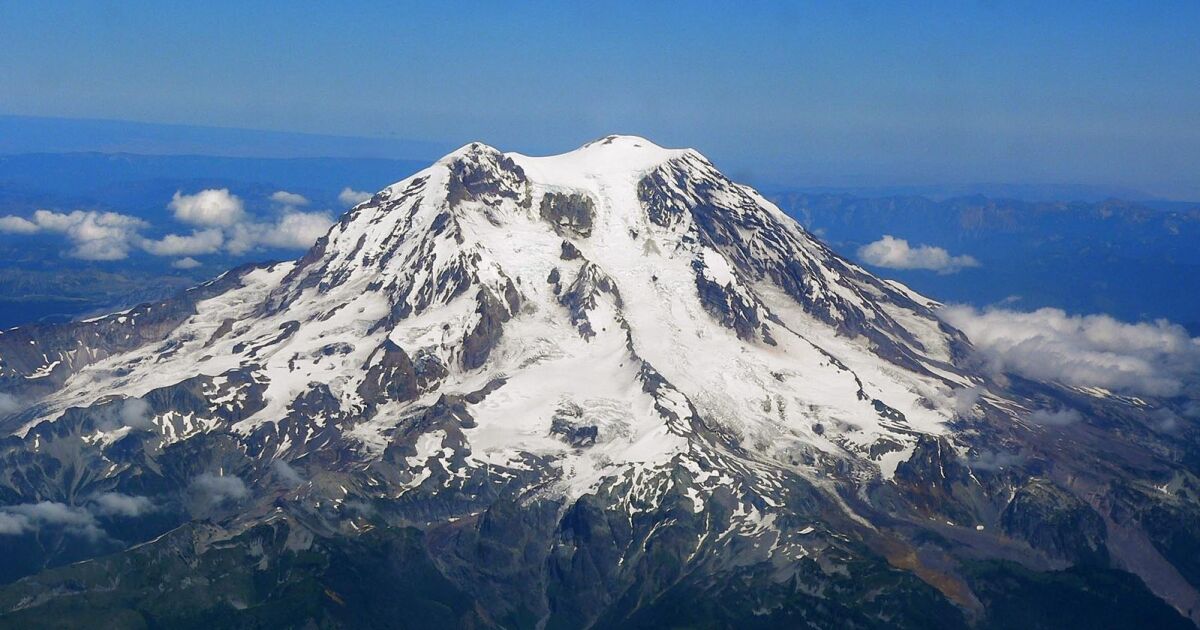As global temperatures rise, even the coldest, highest mountain peaks are showing signs of change.
“An ice-capped peak is one where ice persists year-round, and the ice is not seasonal, so it’s not snowfall from the previous winter,” said Scott Hotaling, a professor in the Department of Watershed Sciences at Utah State University.
Hotaling is also one author of a newly published study showing that ice-capped peaks are melting.
Historically, there have been only five ice-capped peaks in the contiguous United States. All five are in Washington.
“Of those five summits that were previously capped by ice as of maybe 1950, only two of them still have ice as their highest point: Colfax and Liberty Cap are still ice capped — for now,” Hotaling said.
The other three ice-capped summits, including Mount Rainier, have all shrunk by up to 30 ft since 1950 and now have rocks as their highest points.
In order to get the most accurate data, Hotaling said they used both historical and modern techniques: measuring angles with a tool called a theodolite, examining photographs, and using fine-scale measurements from a differential GPS.
“There’s a reason people don’t track the heights of high-elevation mountains of the world. It’s some of the most challenging field work that you can possibly do,” Hotaling said. “And so, we were lucky in that part of our team included this guy named Eric Gilbertson, who’s the lead author. And Eric is a world-class mountaineer — I mean literally.”
Eric Gilberston is an engineering professor at Seattle University. For this study, he personally climbed to the peaks of all five summits to take hour-long recordings of GPS and climate data.
“I’m really into mountaineering and peak bagging around the world. I’ve been doing it for maybe 20 years,” Gilbertson said. “I like to have the best data available. If I’m climbing the highest mountain in every country in the world, I want to get the right mountain, and I want future mountaineers to know what’s the right mountain, so they don’t climb the wrong peak.”
As part of this project, Gilbertson said he has become interested in understanding how mountains are changing.
“It was kind of an assumption not too long ago that mountains just pretty much don’t change, but I found that some of them do,” Gilbertson said. “So if they have ice caps, they’re melting down. And then a mountain like Mount St. Helens is actually eroding down. It’s losing a couple of inches every year.”
Hotaling, a former climbing ranger at Mount Rainier, was intrigued by Gilbertson’s initial findings.
“I was shocked when I heard about Eric’s preliminary measurements of Rainier, that Rainier was shorter than it was even 20 years ago, when I did a lot of work there,” Hotaling said. “Because Mount Rainier is the highest, coldest mountain in the Western US. And to have climate change having such a dramatic impact, year over year, at the summit — that just means it’s happening everywhere.”
“Climate change is reaching the tops of mountains now, they are getting above freezing, and they’re getting shorter,” Gilbertson said.
To learn more about how climate change is impacting mountains, visit the Mountain Futures YouTube channel, produced by the Climate Change in Mountains research and extension group at Utah State University, led by Dr. Scott Hotaling.
